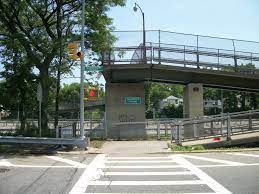For years, a rumor or urban legend--what's the difference between them?--said that bicycles were illegal in the People's Republic of Korea (PRK), a.k.a. North Korea. Given the country's reputation as one of the most totalarian states, and the fact that almost no one in the West could be sure of what was happening in the country, the story seemed plausible.
Turns out, bicycles weren't officially banned. But they were frowned upon as a primitive means of transport for a country whose leader saw it as a modern socialist utopia--until 1992. That year, cycling gained official acceptance, though the country's leader, Kim Jong-Il, officially banned it women because he thought the sight of a woman striking a "seductive" pose on the saddle would corrupt public morals.
Now, I must say that it still surprises me that anyone has ever found me "seductive," "sexy" or even cute in any position, whether as the woman in, ahem, late middle age that I am now or the dude I once was. And, to my knowledge, the only ways in which I've ever "corrupted" anyone was to have them read essays, poems or books that provoke "subversive" thinking--or to have those people write what they were really thinking or feeling at that moment.

Anyway, for someone who thought he was turning his country into a socialist paradise--which, one presumes, is for the benefit of common people and not based on religious orthodoxy--Kim Jong-Il's attitudes, at least when it came to women and bicycles, weren't much different from those of the leaders of Saudi Arabia or other extreme theocracies. His son, King Jong-Un, from what I understand, hasn't been enforcing that ban, in part because in a country where few people have cars and mass transportation isn't widely available, especially in rural areas, much of what's grown in that country--by women--would never get to market if women couldn't port it on bikes.
Kim Jong-Un has been pictured on amusement park rides and horses, but not on bicycles. But, ironically, his non-enforcement of the ban on women riding bikes isn't the only thing that makes his country's capital city, Pyongyang, 'bicycle friendly." Bicycles are not just socially acceptable; they dominate the streets as they did in Chinese cities a generation ago, for the same reason: There are few cars.
Interestingly, while some cite bicycles outnumbering people in Dutch and Danish cities as reasons why cycling and cyclists are respected to a greater degree than they are in the US, bicycles aren't fetishized, the fact that they are a, if not the, major means of transportation in Pyongang and other PRK cities is the reason why they are status symbols, in more or less the same way as cars in other places. Japanese-made bicycles are the most-after (Hmm...Perhaps I should have saved my Miyatas just in case I ever take a trip there!), followed by locally-made bikes that are rumored to be made by prisoners. Chinese-made bikes are at the bottom of the heap, just as they were in the US about a generation ago.
Could it be that UK Transport Secretary Grant Shapps was looking to the PRK rather than the Netherlands, Denmark or France in proposing a new bike-related policy?
No, he's not looking to get more cars off the road or women on bikes, or to build more bike lanes. Rather, he wants to adopt one of the PRK's more controversial policies: registration plates, like those on automobiles, prominently displayed on the front of every bike.
Oh, but he's looking to go even further than King Jon pere ou fils: He wants to require insurance and impose speed limits for bicycles. Moreover, he wants to impose a system of penalty points similar to the ones for motorists who violate the speed limit or other regulations.
Now, to be fair, he's not the first British public official to propose such regulations. But I think more citizens, whether they favor or oppose such rules, are paying attention because of the increasing numbers of people who are cycling for fun or to get to work, school or the store.
Whatever happens, it is ironic that an official of a Western country that is often seen as "liberal" would take one of the world's most illiberal states as its model for policies related to a form of transportation and recreation that can do more than almost anything else to liberate women--and men and children.









